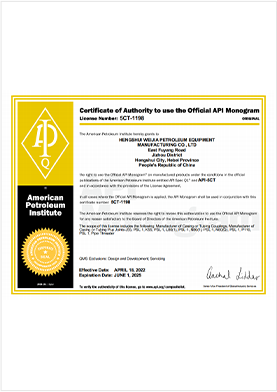- Afrikaans
- Albanian
- Amharic
- Arabic
- Armenian
- Azerbaijani
- Basque
- Belarusian
- Bengali
- Bosnian
- Bulgarian
- Catalan
- Cebuano
- Corsican
- Croatian
- Czech
- Danish
- Dutch
- English
- Esperanto
- Estonian
- Finnish
- French
- Frisian
- Galician
- Georgian
- German
- Greek
- Gujarati
- Haitian Creole
- hausa
- hawaiian
- Hebrew
- Hindi
- Miao
- Hungarian
- Icelandic
- igbo
- Indonesian
- irish
- Italian
- Japanese
- Javanese
- Kannada
- kazakh
- Khmer
- Rwandese
- Korean
- Kurdish
- Kyrgyz
- Lao
- Latin
- Latvian
- Lithuanian
- Luxembourgish
- Macedonian
- Malgashi
- Malay
- Malayalam
- Maltese
- Maori
- Marathi
- Mongolian
- Myanmar
- Nepali
- Norwegian
- Norwegian
- Occitan
- Pashto
- Persian
- Polish
- Portuguese
- Punjabi
- Romanian
- Russian
- Samoan
- Scottish Gaelic
- Serbian
- Sesotho
- Shona
- Sindhi
- Sinhala
- Slovak
- Slovenian
- Somali
- Spanish
- Sundanese
- Swahili
- Swedish
- Tagalog
- Tajik
- Tamil
- Tatar
- Telugu
- Thai
- Turkish
- Turkmen
- Ukrainian
- Urdu
- Uighur
- Uzbek
- Vietnamese
- Welsh
- Bantu
- Yiddish
- Yoruba
- Zulu
Understanding Casing and Tubing Connections in Oil and Gas Operations
Casing and Tubing Connections An Overview
In the oil and gas industry, casing and tubing are essential components that play a crucial role in the drilling and production of hydrocarbons. Understanding the connections associated with these elements is vital for ensuring the integrity, safety, and efficiency of drilling operations. This article provides an overview of casing and tubing connections, their types, and their importance in the industry.
What are Casing and Tubing?
Casing refers to the series of pipes that are installed in a wellbore to provide structural integrity and prevent the collapse of the hole. It also serves to isolate the different formations encountered during drilling, protecting freshwater aquifers and containing the pressures encountered during production. Tubing, on the other hand, is the pipe through which the hydrocarbons flow from the reservoir to the surface. It is inserted into the casing and is designed to handle the pressures and temperatures associated with the extraction process.
Types of Connections
The connections between casing and tubular pipes are critical for maintaining the well's structural integrity. There are several types of connections used in the industry, each suited for specific applications and depths
1. Threaded and Coupled Connections This is one of the most common types of connections. Each pipe section has threaded ends that are connected using a coupling. It is relatively easy to install and remove but may not provide the same level of sealing as other connection types.
2. Welded Connections In this method, metal is melted to fuse the ends of the pipes together. Welded connections can offer a more secure and leak-proof joint, but the process requires specialized skills and equipment.
3. Slip-on and Welded Connections This hybrid method involves slipping a pipe over another and then welding the two together. This connection type can provide the benefits of both ease of installation and added strength.
casing and tubing connections

4. Flanged Connections Flanges are mechanical connectors that allow for the joining of pipe sections using bolts. This type of connection enables easy disassembly for maintenance and inspection, making it ideal for applications where regular access is necessary.
5. Integral Connections These connections are machined directly onto the pipe body, providing a robust and leak-proof solution. Integral connections are often used in high-pressure applications where reliability is paramount.
6. Premium Connections These are specially designed connections that offer enhanced sealing capabilities and resistance to various environmental factors. They are typically used in challenging conditions, such as deepwater drilling or high-temperature environments.
Importance of Quality Connections
The quality of casing and tubing connections can significantly impact the operational performance and safety of drilling activities. Poorly made connections can lead to leaks, wellbore instability, and ultimately, costly production losses. Moreover, compromised connections can pose safety risks to personnel and the environment.
Proper selection of connection types based on the specific well conditions, such as depth, pressure, and temperature, is essential. Additionally, rigorous testing and quality control measures during the manufacturing and installation processes can ensure the reliability of these connections.
Conclusion
In summary, casing and tubing connections are fundamental to the success of drilling operations in the oil and gas industry. A thorough understanding of the various connection types and their appropriate applications allows engineers and operators to make informed decisions that enhance well integrity, safety, and performance. As technology continues to evolve, advancements in materials and connection design will likely lead to even greater efficiencies and safety in hydrocarbon extraction. It is crucial for industry professionals to stay informed about these developments to ensure the continued success and sustainability of oil and gas endeavors.
-
Tubing Pup Joints: Essential Components for Oil and Gas OperationsNewsJul.10,2025
-
Pup Joints: Essential Components for Reliable Drilling OperationsNewsJul.10,2025
-
Pipe Couplings: Connecting Your World EfficientlyNewsJul.10,2025
-
Mastering Oilfield Operations with Quality Tubing and CasingNewsJul.10,2025
-
High-Quality Casing Couplings for Every NeedNewsJul.10,2025
-
Boost Your Drilling Efficiency with Premium Crossover Tools & Seating NipplesNewsJul.10,2025







